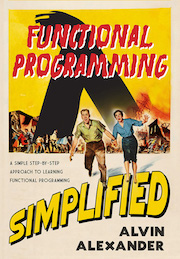By Alvin Alexander. Last updated: March 20, 2022
As a brief experiment today (May 30, 2020) I took a quick look at how Scala 3 (Dotty) opaque types are compiled. I started with this Scala/Dotty code in a file named OpaqueTypes.scala:
object OpaqueType:
opaque type SSN = String
object SSN:
def apply(s: String): SSN = s
Then I compiled that code with dotc (now scalac):
$ dotc OpaqueTypes.scala
Then I decompiled the resulting files with jad. I found this Java source code in a file named OpaqueType.jad:
import java.io.Serializable;
import scala.runtime.ModuleSerializationProxy;
public final class OpaqueType {
public static final class SSN.
implements Serializable {
private Object writeReplace() {
return new ModuleSerializationProxy(OpaqueType$SSN$);
}
public String apply(String s) {
return s;
}
public static final SSN. MODULE$ = this;
static {
new SSN.();
}
public SSN.() {
}
}
}
I don’t know much yet about Dotty’s ModuleSerializationProxy, but it seems to be a key to using opaque types.
And I found this Java code in a file named OpaqueType$.jad:
import java.io.Serializable;
import scala.runtime.ModuleSerializationProxy;
public final class OpaqueType$
implements Serializable {
private OpaqueType$() {}
private Object writeReplace() {
return new ModuleSerializationProxy(OpaqueType$);
}
public static final OpaqueType$ MODULE$ = this;
public final OpaqueType.SSN. SSN;
static {
new OpaqueType$();
}
}
I hope to write more about this in the future, but for today, if you’re interested in how Scala3/Dotty opaque types compile down to Java code, I hope this example is helpful.
| this post is sponsored by my books: | |||

#1 New Release |

FP Best Seller |

Learn Scala 3 |

Learn FP Fast |